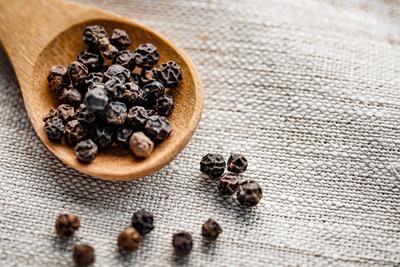
Tuesday June 8, 2021
 Education
Education
Terpenes play a crucial role in cannabis. They provide cannabis with the smell and flavors we’ve all come to know and love that are present in our favorite strains. Terpenes also play a role in the effects that one feels when consuming certain strains and what medical issues they may be able to assist with.
In this article, a part of our new Get to Know a Terpene series, we’ll take a look at Caryophyllene—its aroma, flavors, how it affects us, what strains it can be found in and what products it is naturally found in.
What is Caryophyllene?
Also known as Beta-Caryophyllene, caryophyllene is known for its peppery, herbal, and musky scent as well as its spicy and earthy flavor. Outside of cannabis, it is commonly found in spices that you would find in any kitchen including black pepper, clove, oregano, rosemary, allspice, and thyme. For those of you who are into naturally flavored drinks, this terpene is also present in hops and chamomile. Caryophyllene is not only found in spices and drinks however, it can also be found in everyday toiletries such as shampoo, conditioner, and face creams.
While there are more than 100 known cannabis terpenes, caryophyllene differs from the rest. Not just by its smell and taste, but also in how it plays a part in a persons’ endocannabinoid system.
Studies have shown that caryophyllene acts more as a cannabinoid than a terpene. In fact, unlike all other terpenes, caryophyllene is the only known terpene that has been proven to bind to CB2 receptors and activate them.
Much like CBD, caryophyllene can bind to CB2 receptors without causing any psychoactive effects, while providing relaxing, calming, happy, and other mood-boosting effects. Because of these effects, strains with higher amounts of caryophyllene are most beneficial in helping with anxiety, PTSD, and mood disorders.
Caryophyllene also contains natural anti-inflammatory, antimicrobial, antibacterial, and antioxidant properties. Due to these benefits, it is thought to aid with issues such as immune system diseases, bacterial diseases, and chronic pain conditions such as arthritis, bursitis, fibromyalgia, diabetic nerve pain and osteoporosis.
Caryophyllene & Medicine
Research has shown that the terpene may help against neurodegenerative diseases such as Parkinson’s disease, multiple sclerosis and Alzheimer’s disease as well as seizures and brain swelling. Caryophyllene may also be found in personal hygiene items due to its antimicrobial, antibacterial, and antioxidant capabilities.
Furthermore, caryophyllene can provide even more benefits when paired with other cannabinoids and pharmaceutical medicines. For example, when working in conjunction with THC, research has shown that it can help prevent or assist in healing gastrointestinal disorders or diseases. Other research suggests that when it interacts with CBD, it might be used as a way to treat drug abuse and addiction. Additionally, a 2007 study published in the Journal of Pharmacy and Pharmacology found that when paired with alpha-humulene, caryophyllene increased the effectiveness of chemo-therapy in cancer patients ten-fold, and decreased activity in cancerous cells.
Caryophyllene’s Interactions with Other Cannabinoids
Caryophyllene can also diminish the effects of THC. However, this could be seen as a good or bad thing. On one hand, it may alter the effectiveness of THC in aiding ailments that may need a higher amount of THC to medicate. However, on the other, strains high in caryophyllene may be a better choice for those who are using cannabis for the first time or have a low tolerance. It may also act like CBD, possibly extending the length of THC uptake.
Which Strains Have Caryophyllene?
It’s clear that caryophyllene has many benefits, but what strains can you find it in? Can it only be found in Indica’s or Sativa’s? What about Hybrids? The truth of the matter is, most strains will have some level of caryophyllene. The following is a list of cannabis strains that contain high amounts of caryophyllene, specifically. Use Potguide’s strain library to find more information about each strain’s flavor, aroma, lineage, and perceived health benefits.
- Hash Plant – Indica
- Sour Diesel – Sativa dominant hybrid
- Chem Dawg – Sativa dominant hybrid
- Girl Scout Cookies – Hybrid
- Original Glue (GG #4) – Hybrid
- Master Kush – Indica dominant hybrid
- The White – Hybrid
- Deathstar – Indica dominant hybrid
- Bubba Kush – Indica
- Skywalker OG – Sativa dominant hybrid
The Wrap Up
This fascinating terpene likely has many more benefits than those we know of. It’s unique interactions with other cannabinoids, and its direct effect on cannabinoid receptors, might help to shine some light on the often misunderstood and hotly debated “entourage effect.” There is still much for scientists to discover about this terpene, who knows what they’ll find next!
What do you enjoy about strains high in Caryophyllene? Share in the comments!







